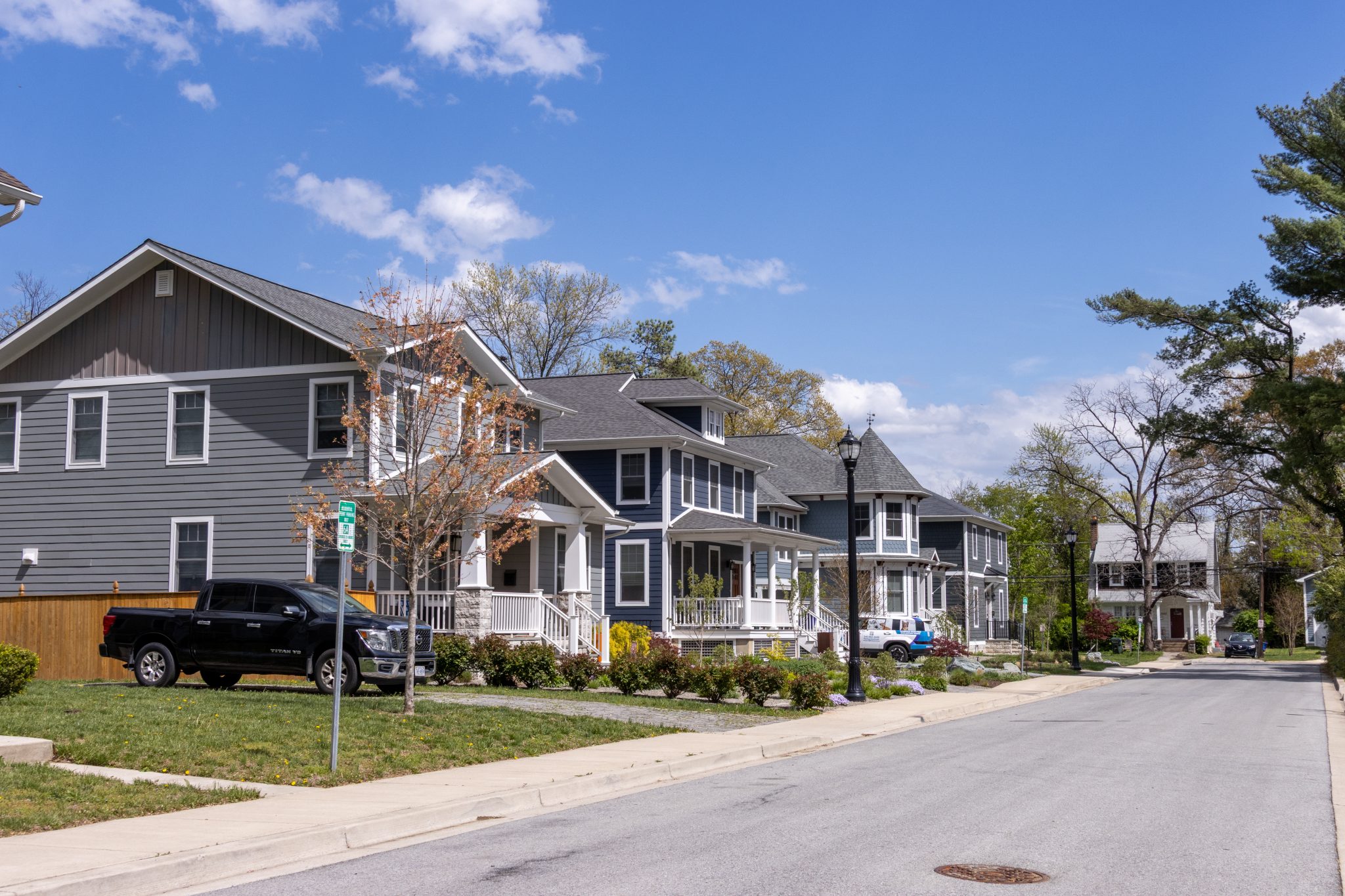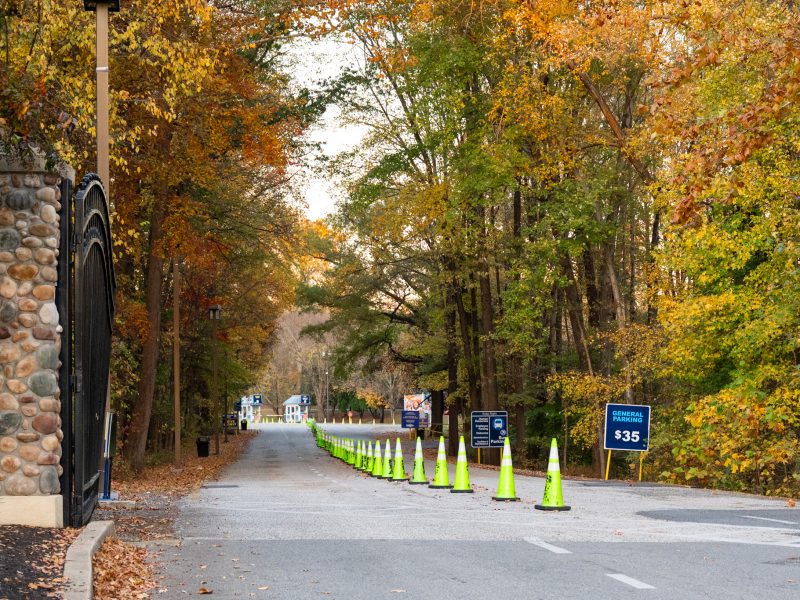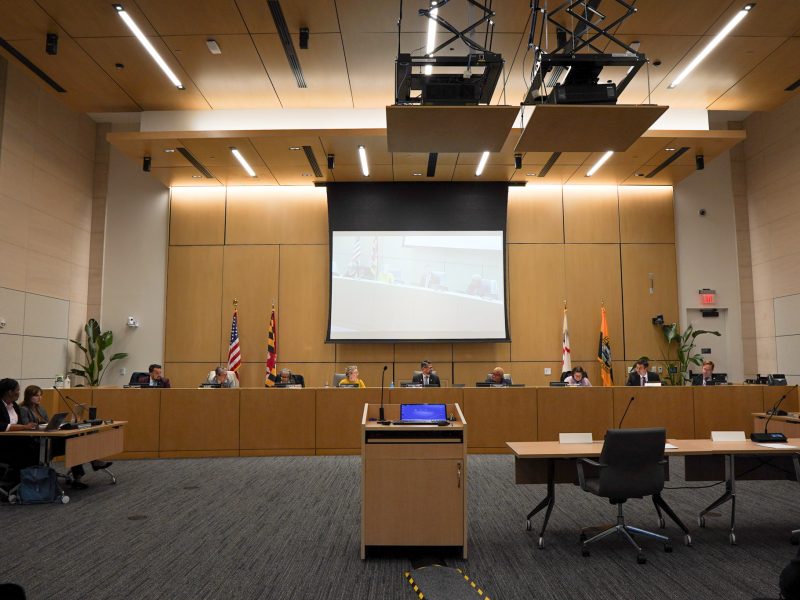A program that helps College Park employees purchase homes in the city celebrated a milestone Tuesday, welcoming its 100th homebuyer since launching nearly a decade ago.
The Live+Work College Park Program, run by the College Park City-University Partnership, provides a $20,000 down payment or closing cost assistance to full-time employees who work in College Park or the Discovery District and purchase a home in College Park. It’s structured as a seven-year, zero-interest, forgivable loan.
Since its start in 2015, the partnership has assisted 104 homebuyers and supported $40.5 million in home sales within College Park, according to partnership communications and outreach manager Kendra McAbee.
[Renowned chef Peter Chang brings Szechuan restaurant to College Park]
Ed Maginnis, the University of Maryland’s assistant vice president of real estate, said members of the partnership’s board discussed how to approach housing issues prior to the program’s establishment.
“One of the observations that was made was that very few employees of the university live in the community,” he said.
The program, previously known as the Homeownership Program, underwent several updates last year, McAbee said.
Eligibility expanded beyond city limits to include employees in the Discovery District, and the program opened to all full-time College Park employees, not just city or university employees.
The assistance amount also increased from $15,000 to $20,000. The loan term was shortened from 10 years to seven years to align with increases in housing costs and how long most people live in houses.
“We want alums to also see College Park as a place that they not only go to school, but they can come back to, or they can stay,” McAbee said.
Maryland housing and community development secretary Jacob Day, who attended Tuesday’s event at Davis Hall, said state grants have been a key part of supporting the program.
[Micromobility users ride through Rhode Island Trolley Trail to promote better trails]
“We are big believers in those state dollars as leverage, those small investments that turn into what’s collectively been $2.65 million to the partnership,” he said.
Day said in the last four years, the state has spent about $360 million on down payment assistance programs and $4.5 billion in mortgages for first-time home buyers statewide.
Stephanie Williams, an academic advisor for this university’s physics department, said she would not have purchased her College Park house in September 2024 without the program.
“There’s no way I was going to be able to get a house, period, let alone in this area so close to commuting to where I work and my friends and stuff without this down payment,” she said.
Melissa Minnifield moved to Maryland from Louisiana in 2022 with her husband after they both accepted jobs at this university. She originally had a tough time finding a place to live, especially with high interest rates and houses being more expensive than expected.
Minnifield bought a house through the program after learning about the program from the university’s employee welcome packet.
[UMD to install air conditioning in Ellicott, Hagerstown halls]
Becky Owen, who was the program’s 100th homebuyer, works for the Food and Drug Administration Center for Veterinary Medicine. Her office relocated from Rockville to College Park over the summer, but she wanted to continue living near her work.
Owen said the assistance from the program made the move more financially feasible.
Susan Slingluff Hartmann, executive director of College Park City-University Partnership, said the partnership is exploring opportunities to add additional levels of affordability to the program.
She explained that once potential homebuyers find a house and a mortgage, the program helps from there. But that’s not feasible for many, she said.
“It can be very hard for people to qualify for a mortgage if they have a lot of student loan debt or maybe their salaries are pretty good, but they’re not quite where they need to be to be able to afford this local market,” she said.
Hartmann said the partnership is hoping meet a goal of 20 participants this year. The program has reached 14 homebuyers so far this year.



